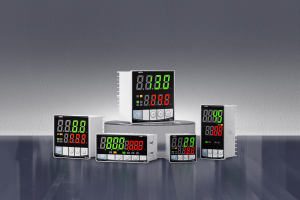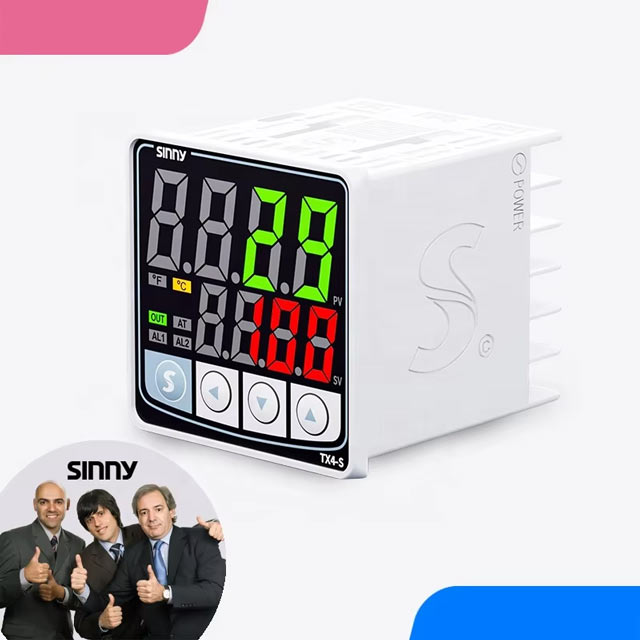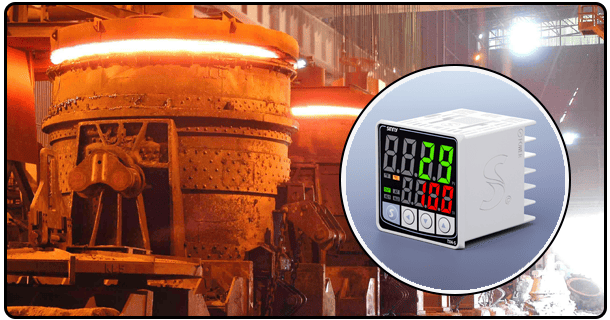Understand 86264V Temperature Controllers Wide Voltage Range Compatible & Precise control explained
Discover the flexibility of PID temperature control systems. Learn about their compatibility with a wide range of voltages (86-264V) and global applications. Also, learn more about the benefits they offer, as well as key features.
1. The following is a brief introduction to the topic:
The reader will be able to gain the knowledge necessary to understand the importance, capability, and benefits of using such advanced control devices.
2. What is PID temperature controller?
The PID controller is a highly sophisticated feedback system that regulates a process variable (in this case, temperature) by changing an output device according to the differences between the setpoint desired and actual temperature. The core effectiveness of these controllers originates from their Proportional-Integral-Derivative (PID) algorithm. The algorithm calculates continuously the corrective actions required to minimise the error, the difference between setpoint and measured temperature, and then applies them to the output – typically a heat exchanger, cooler or other actuator. PID integrates three control actions: proportional, integral, and derivative. The components each contribute to the accuracy and stability of temperature control.
The proportional (P) element directly addresses the size of the error. The output is changed in a proportion to the magnitude of the error. The output signal is stronger when the error magnitude is larger, while a small error produces a weaker signal. The integral (I) is a component that focuses on accumulating past errors. The error is integrated over time to eliminate steady state errors. The system will not fail to achieve the target temperature. Derived (D) predicts errors in the future based on how fast the error rate is changing. This component helps dampen oscillations and overshooting around the setpoint, resulting in a faster and more stable convergence to the desired temperature. The PID controller can react to temperature changes in a timely manner, with minimal deviation. It also maintains a stable, accurate and reliable temperature control.
3. What is the significance of the voltage range 86264V?
The 86264V temperature controller has a remarkable range of tolerance for input voltages.
4. The 86264V temperature controllers have a number of features that make them stand out.
Multi-sensor Compatibility: These sensors are compatible with many common temperature sensor types. This includes a variety of thermocouples, such as J, K and T (or E, R and S), and resistance temperature detectors, like the PT100 or PT1000.
User Friendly Interface: The majority of modern 86264V controllers have an intuitive interface that incorporates a digital display with a simple menu and incorporated graphical elements. The user can easily adjust the settings, set a target temperature, check current conditions, see error messages and monitor them.
Multiple Output Options This controller provides multiple output options to control the load. Solid State Relays are used for smoother control. Relay contacts can be used for resistive loads and contactors.
Features of Safety: Safety, in particular with the wide voltage range is an important consideration. These controllers are often equipped with essential safety features. They may have overheating alarms and high-low limit switches (which will shut off the output automatically if temperatures are above or below safe limits) and rugged enclosures to protect users and internal components from electrical hazards.
Communication Protocols (Optional, but Common): Advanced 86264V controllers have communication capability, including RS485 and Modbus RTU/ASCII. This allows them to be integrated in larger Supervisory Control and Data Acquisition (SCADA), or Distributed Control Systems.
5. Common applications of the 86264V V PID controllers
86264V temperature controllers are suitable for many applications in a variety of industries.
Industrial processes: The controllers used in the industrial environment are often employed to control temperature for critical equipment like furnaces and ovens. They also regulate temperatures of mixing tanks, heat exchangers, reactors and dryers. Precision temperature control in the manufacturing process is essential for product quality and consistency.
Lab Equipment: Maintaining stable thermal conditions in scientific research and development is essential. The temperature is controlled by 86264V controllers in incubators and water baths. They are also used for environmental chambers and culture stations.
HVAC and Climate Control: Although standard HVAC systems in residential homes may work differently, commercial HVAC controllers are available for large heating, ventilation, air conditioning, or specific zones that require very precise temperature control
Research & development: For various test and development protocols, researchers often need controllers that can deliver precise and consistent temperatures in different power environments.
6. The advantages of using a 86264V temperature controller
The 86-264V PID controller has several advantages. This is especially true when you are operating in an environment with nonstandard power sources or need global compatibility.
Compatibility with Global Voltage: The main advantage of this product is its ability to work in a large voltage range (86264V). They are therefore suitable to be used in any region or country without needing expensive voltage converters. This saves both space and money.
Safety Enhanced: Because they are designed to work with a wider range of input voltages than other controllers, many have more robust circuitry inside and include safety features. This can offer increased protection from electrical problems caused by power supply inconsistencies or variations. The enhanced safety profile of these controllers is essential in industrial and commercial applications.
Improved Reliability : By reducing the risks of failures due to issues with power supplies, can increase reliability. The controller's ability to function reliably across different voltage standards reduces the risk of operational failures related to power supply issues.
Flexibility A wide range of operating conditions provides users with significant flexibility. The equipment can be used in different locations around the world with only minimal changes to its electrical configuration. It can also accommodate other power sources.
Increased precision and stability: These models, like standard PID controllers excel in maintaining the temperature set with high accuracy, and are stable, due to their effective implementation of PID algorithms. The PID algorithm ensures that the controller will perform consistently regardless of voltage.
Savings potential: Although it is an investment, eliminating the need for voltage convertors and increasing reliability will lead to lower operational costs over the lifetime of the controller.
7. What to Look for When Choosing the Best 86264V Temperature Control?
It is important to select the right 86264V temperature controller for your application. This will ensure optimal performance and compatibility. When evaluating the product, it is important to consider several key aspects.
Define your Application Needs: Start by understanding all the specific requirements for your application. It is important to identify the type of process (e.g. heating or cooling), temperature range required, nature of load (e.g. resistive, inductive or capacitive) and whether it involves continuous operation, intermittent operation, cycling, etc.
Check Voltage: Confirm voltage requirements. Confirm which specific range of voltages within the window 86264V that will be used by your application. Although these controllers were designed to work in this range, it is important to verify compatibility. Consider the frequency of power (either 50Hz or 60Hz), even though most controllers are compatible with both.
Type of Sensor and Temperature Range: Choose the right type of sensor for the temperature range in your application and its environment. The most common choices are thermocouples of all types (J,K,T,E,etc.). RTDs, such as PT100 and PT1000 (Resistance temperature detectors), are also popular choices. Check that the selected sensor type is supported by the controller and the typical range of measurement.
Accuracy Required and Resolution: Compare the accuracy of the controller (often expressed in percentages of the range of setpoints, such as +-0.5% span) with the resolution of your process (smallest temperature changes it can detect).
Configuration of Output: Select the correct type for output control (the device which responds to controller signal such as heating element, fan or chiller). Typical options include solid state relays (SSRs), which allow for smoother modulation, and relay contacts that switch on/off.
Ease and Interface: Take into account the display type (LCDs are common), how easy it is to navigate the menus and set parameters and if the programming features suit your needs. An intuitive interface will reduce the time required for setup and operation.
Safety Certificates: Search for the necessary certifications for you application or region.
Budget considerations: Compare features, performance specs, and cost from different manufacturers. Price is important, but reliability and performance are more critical for applications that require high-quality equipment. Total cost of ownership should be considered, which includes energy savings potential and required maintenance.
8. Install and Setup Basic Guide
Safety first: Before beginning any installation, make sure that all power supplies to the controllers and loads are disconnected. Follow strict safety procedures when it comes to electrical work. Working with 240VAC poses significant risks. Incorrect wiring can lead to injury, equipment damage, and fire. Consult a professional if you have any questions about the installation.
Installing a Typical System: Installing a new system generally requires the following steps.
Installation of Sensors: Install the sensor (thermocouple, RTD or other) at a place that represents the process temperature. It should be securely installed and protected from physical damage or direct air drafts. The sensor wires should be connected to the terminals of the controller in accordance with the wiring diagram provided by the manufacturer.
Wiring Power: Connect 86264V of AC to the power input terminals on the controller. It is important to ensure that the voltage (86-264V) and frequency (50/60Hz), as specified in the manual, are met. Only use terminals and wiring rated for the appropriate power supply. The controller should be grounded according to the local electrical code.
Connection of the load: Connecting the heating element or cooling device (the load), to the output terminals designated on the controller. Follow the wiring instructions of your manufacturer. Make sure the output is compatible (e.g. resistive loads for SSRs and relays).
Checks for Final Checks Verify that all connections are tight and in order. Check that all wiring is properly protected and secure. Position the controller in an appropriate locati0n that has adequate ventilation.
- A Need for Accessible Climate Contro
- PID temperature controllers explained: their features, functions, and applications























